The best vegetables for vertical planters allow you to grow more food in less space while adding charm to your garden. Vertical gardening makes it easy to train vining crops on trellises, fences, and towers, turning empty walls into productive green spots.
Even if you live in an apartment or have a tiny balcony, you can still enjoy fresh homegrown vegetables by going upward instead of outward.
With the right support, many crops thrive in containers and produce abundantly in cool fall air or warm summer sunshine. They’re easier to harvest, less prone to pests, and bring a beautiful layered look to your outdoor space.
Let’s explore 13 vegetables you can grow vertically and how to keep them healthy in planters.
#1 Pumpkin
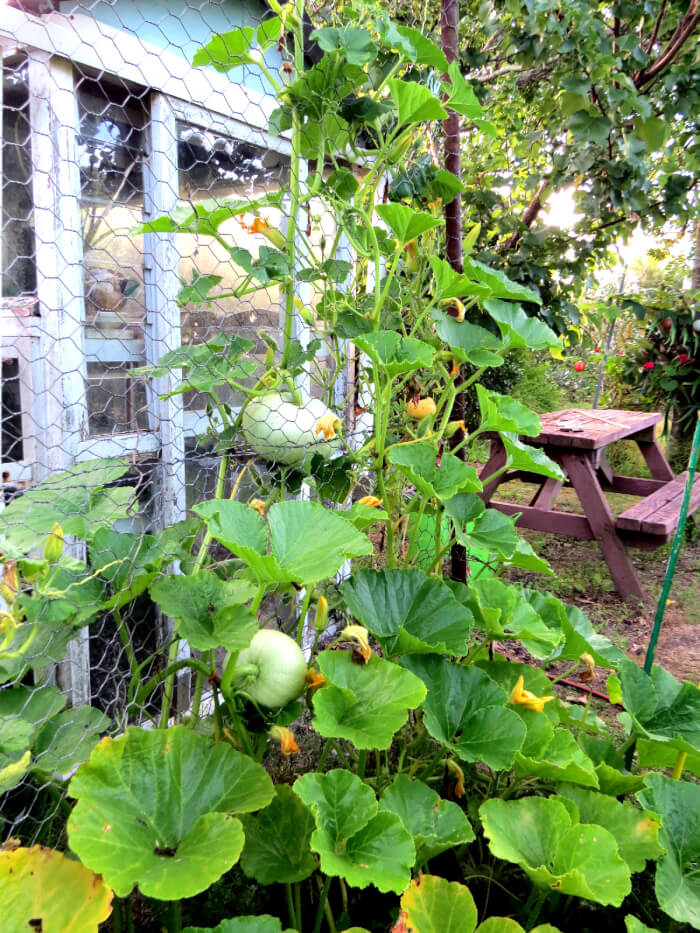
Pumpkins can thrive in vertical planters if you give them strong support like a tepee trellis or sturdy poles. Training the vines upward saves space and prevents the fruits from sitting on damp soil.
Choose smaller varieties such as sugar pumpkins for easier handling. Keep the soil moist and place containers in a sunny location. For heavier fruits, use slings made from old fabric to hold them securely as they grow.
#2 Malabar Spinach

Malabar Spinach is a fast-growing vine that flourishes when trained on trellises or wires. Its glossy leaves add beauty while providing a steady harvest of edible greens. Plant it in warm weather and water regularly to keep growth vigorous.
Place the planter in bright light for maximum yield. Prune often to encourage bushy growth and prevent the vines from becoming tangled.
#3 Winter Squash

Winter Squash varieties like Butternut, Acorn, or Hubbard adapt well to vertical gardening. Lifting the vines keeps them free from ground pests and reduces disease issues.
Use strong trellises or cages to support their weight. Keep the soil evenly moist during fruit set for healthy growth. Harvest once the skin hardens and stores well through the cooler months.
#4 Nasturtiums
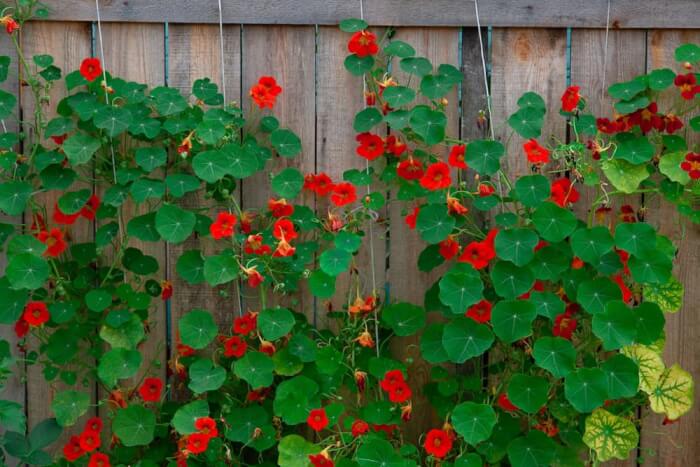
Nasturtiums are multipurpose plants that climb beautifully while providing edible flowers and peppery leaves. They are low-maintenance and perfect for brightening up vertical planters. Train the vines onto netting or lightweight trellises.
These flowers attract pollinators, making them useful companion plants for vegetables. Water regularly but avoid overfertilizing, as too much nitrogen reduces flower production.
#5 Lettuce

Lettuce grows well in vertical towers, ladder planters, or wall-mounted containers. The shallow roots make it ideal for compact growing systems.
Sow seeds in succession for a steady harvest of tender leaves. Keep the soil consistently moist and provide partial shade in hot weather. Harvest leaves from the outer edges to let the plant continue producing.
#6 Zucchini
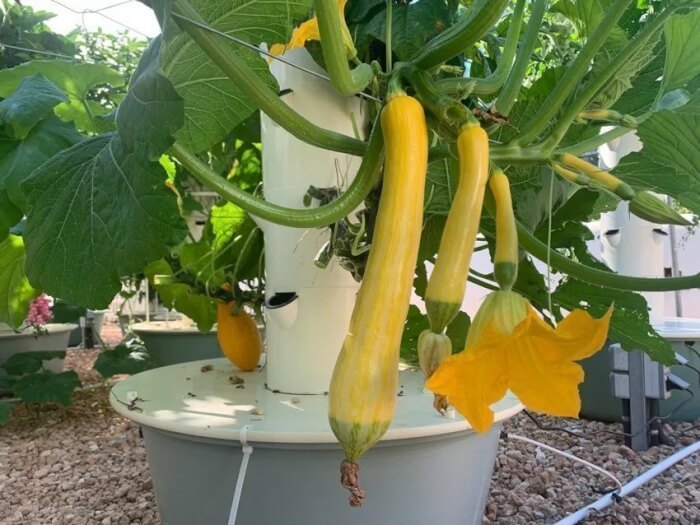
Zucchini vines can be trained upward to keep leaves and fruit off the ground. This method reduces the risk of fungal problems and improves airflow around the plants.
Use strong stakes or trellises to support their heavy growth. Plant in rich, well-draining soil and water deeply once or twice a week. Regular harvesting encourages the plant to keep producing.
#7 Cucumbers
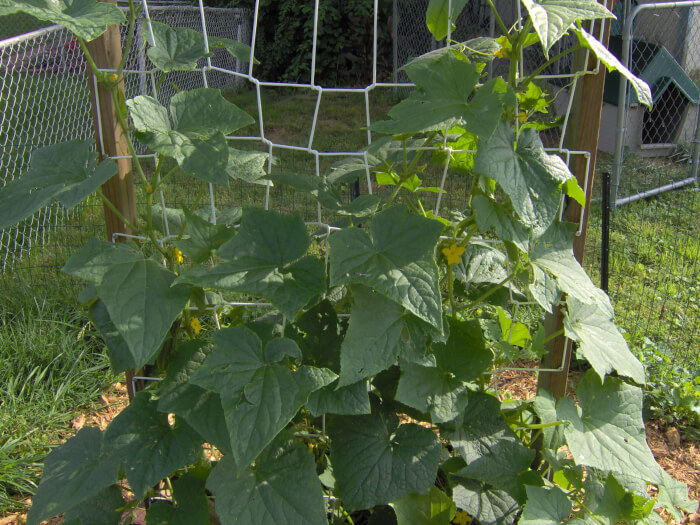
Cucumbers are classic vertical vegetables, thriving when supported by trellises or mesh. Growing them upright keeps the fruits straight and easy to pick.
Choose compact or vining varieties depending on your space. Keep the soil moist and fertilize lightly every few weeks. Train the tendrils as they grow to guide them up the support.
#8 Ivy Gourd

Ivy Gourd is a vigorous vine that grows quickly when given sturdy supports like bamboo stakes or chicken wire. Its small fruits are common in Southeast Asian cooking and add variety to your harvest.
Plant in a sunny spot with moist, fertile soil. Prune the vines regularly to keep them under control. Once established, it produces steadily with minimal care.
#9 Runner Beans

Runner Beans are excellent for vertical gardening since they climb naturally and produce abundant pods. They require full sun and well-draining soil to thrive.
Sow seeds directly into containers with a trellis or poles for support. Water consistently, especially during flowering and fruiting. Harvest pods frequently to keep the vines producing longer.
#10 Hops
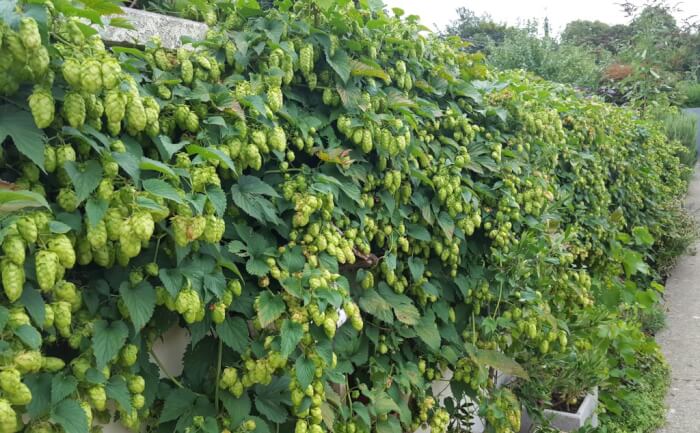
Hops are fast-growing climbers that can reach 10 to 15 feet in one season. While often grown for brewing, they also make attractive ornamental plants.
Provide strong trellises or fences for them to climb. Plant in rich soil and water regularly during dry spells. Cut back dead stems after harvest to encourage vigorous regrowth the following year.
#11 Climbing Tomatoes
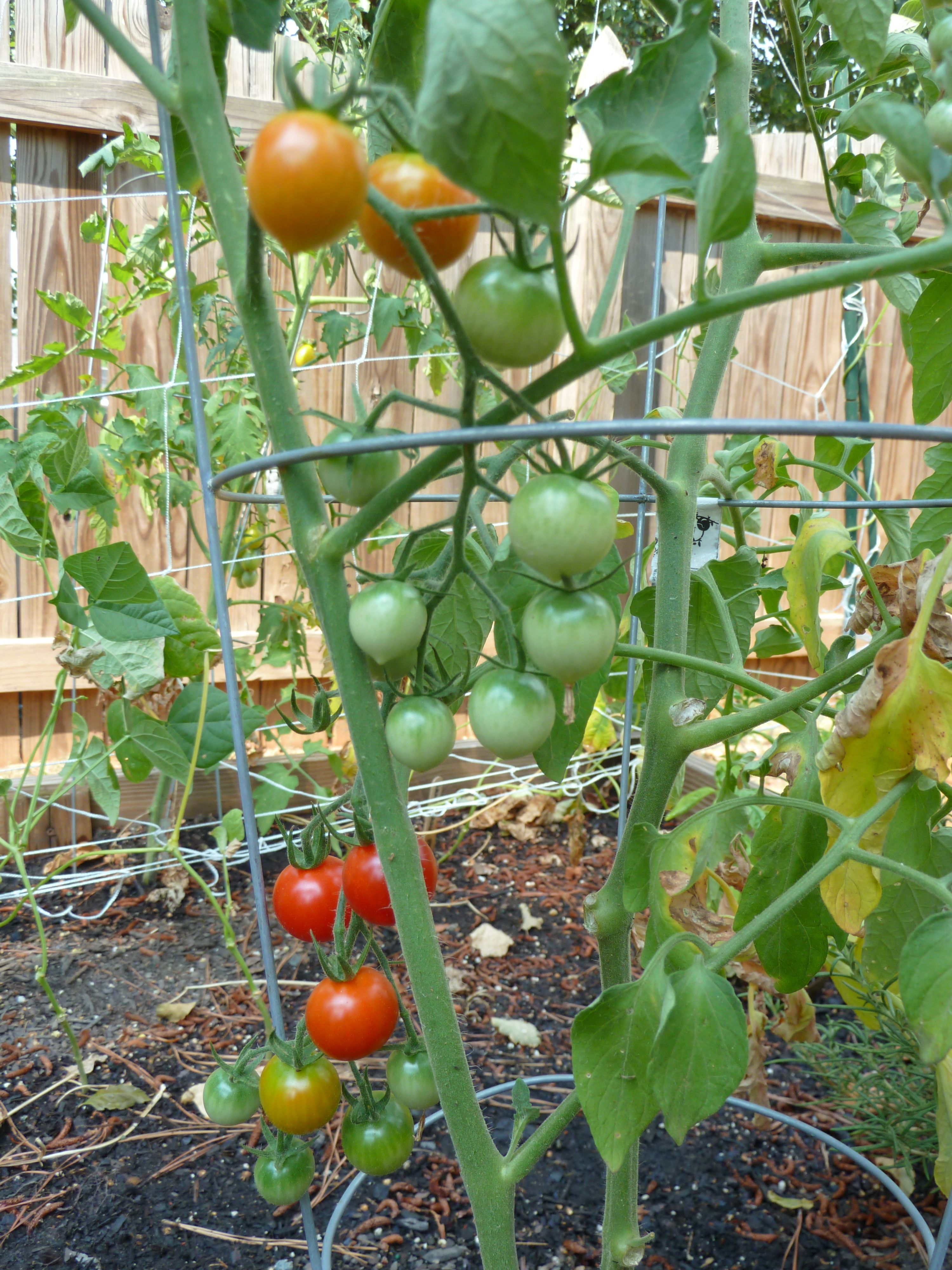
Climbing Tomatoes make the most of small spaces by growing upward instead of spreading across the ground. Use cages, stakes, or string supports to guide the vines.
Keep soil consistently moist and mulch to retain water. Prune side shoots to focus energy on fruit production. With proper care, you’ll enjoy a steady harvest of juicy tomatoes.
#12 Bitter Melon
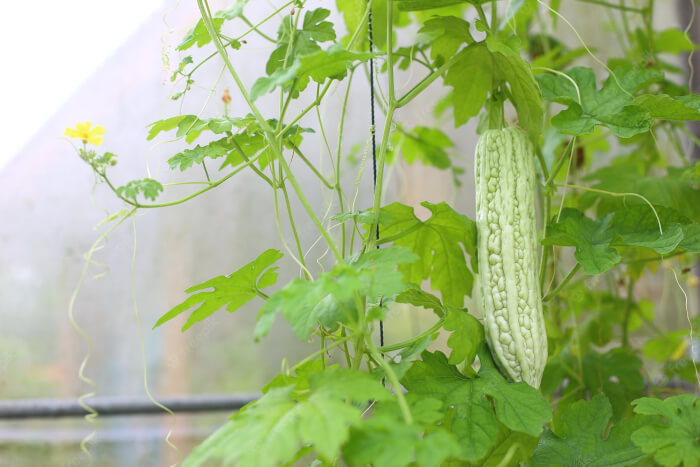
Bitter Melon is a tropical vine with a distinct, crunchy, and bitter flavor. It grows best on trellises or fences where the fruits can hang freely.
Plant in warm conditions and provide regular water to maintain steady growth. Fertilize lightly every few weeks to encourage flowering. Harvest fruits while they are still green and tender for the best taste.
#13 Peas
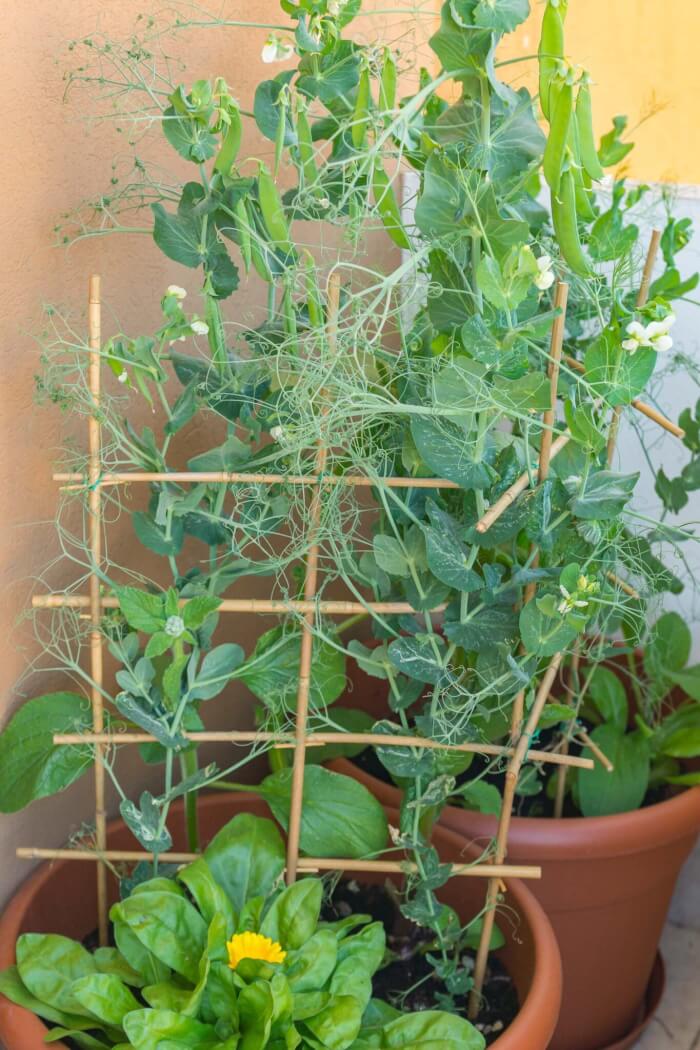
Peas are one of the easiest crops to grow in vertical planters. They climb naturally with tendrils that latch onto netting, stakes, or chicken wire.
Sow seeds in cool weather for quick germination and fast growth. Keep the soil moist, especially during pod development. Harvest pods early for the sweetest flavor and encourage more flowers to form.
